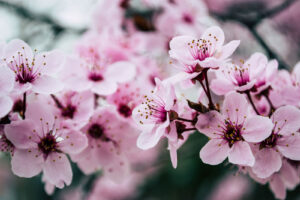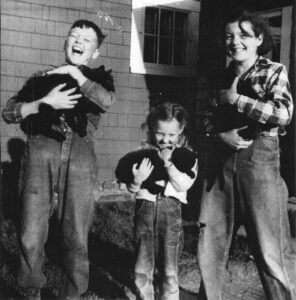I have had many conversations about American Thanksgiving. I have been asked many questions. “Why are we all so crazy about them?”
So I’m working at a kids’ clothing store in Dun Laoghaire, Ireland, and a couple walks into the shop. The man stops, sniffs the air, and puts his hand on her arm to stop her. “There’s a Starbucks. I’m going to get a Pumpkin Spice Latte and no one can stop me!” And he turns on his heels and exits as quickly as he can. “My husband,” she shrugs. “He’s American …” — her way of offering an explanation.
I, with my own thick-enough American accent, say, “Don’t worry about it. I completely understand. It is the Pumpkin Season after all …” as I gesture toward my own white and green cup with a sharpie “PSL” emblazoned across it.
Things are different here in Ireland. It’s never colder than 32° in the winters and never warmer than 80°. Before I left South Carolina, I owned exactly one wool pea coat and a handful of hoodies, and now I have at least a dozen various sweaters and coats. Despite the chill, somehow the landscape remains a violent shade of green year-round. And nothing makes me laugh more than the American aisle in Tesco that is typically stocked with Gatorade (€2), Twinkies (€8), and Lucky Charms (€9). Mysteriously, there are no orange tins of Libby’s 100% Pure Pumpkin.
There are whispers and rumors of canned pumpkin being available in certain specialty shops in the autumn, but I’ve only encountered a nearly empty aisle with a few bent and dented stragglers left behind at Donnybrook Fair, priced at a mere €8 each. When returning from a visit to the United States, I have smuggled a few of those orange tins and a large jar of premade pumpkin spice over in my luggage to bake for my sister-in-law, who is fascinated by this exotic American trend.
I used the cans to make pumpkin pie, pumpkin cheesecake, pumpkin cupcakes, and pumpkin pancakes for her, but she seemed crestfallen by the experience. I’d taken great care to make the short crust and filling completely from scratch à la Alton Brown, only to have my new in-laws politely pick at it and tell me that it is “very well presented,” which is the polite Irish way of saying “flaming hot garbage fire.”
I have had many conversations about American Thanksgiving. I have been asked many questions. “Why are we all so crazy about them?” “What is with the pumpkin spice everything?” “Why do you like pumpkins when they’re not even that good?” “Did I tell you about my crazy American roommate who tried to grow a pumpkin in our dorm because she was afraid the Irish didn’t do pumpkins?” “It’s a bigger deal than Christmas, isn’t it?”
When I lived in the South Carolina Lowcountry, we would traditionally have Thanksgiving in Edisto with Grandma Joyce. She would serve a magnificent feast of ham, turkey, homemade rolls, five different desserts, and a dozen sides of “vegetables” prepared in that gloriously fattening way that only a Southern grandmother can accomplish. With the Macy’s Thanksgiving Day Parade or the football game playing in the background, I would challenge my cousins Allan and Josh to a food-eating contest, and win. Basking in the powers of my gluttony, we would soon be fighting drowsiness with a brisk walk on the cool but sunny beaches of Edisto. But, some things change, and change forever. With my cousins growing up, the loss of my grandfather, and Grandma Joyce moving away, I am reminded that traditions change in the sweeping tides of time.
Maybe next year, I will finally grow my very own pumpkin patch and grind up my own mixes of Pumpkin Spice in an effort to reach my full pumpkin potential and wait for the Great Pumpkin. But, as the currents change, so have my baking traditions. The local pumpkin patches are all closed as we go into a second lockdown. My friend Ann plans to make a large pile of roti (round unleavened West Indian flatbread). I will attempt to introduce another variation of pumpkin pie, as well as Grandma Joyce’s Chocolate Chess Pie as a back up. And my mother-in-law plans to make many different and glorious forms of potato. I will pick crabapples and rosehips in the garden and make syrups from them after the first frost.
























